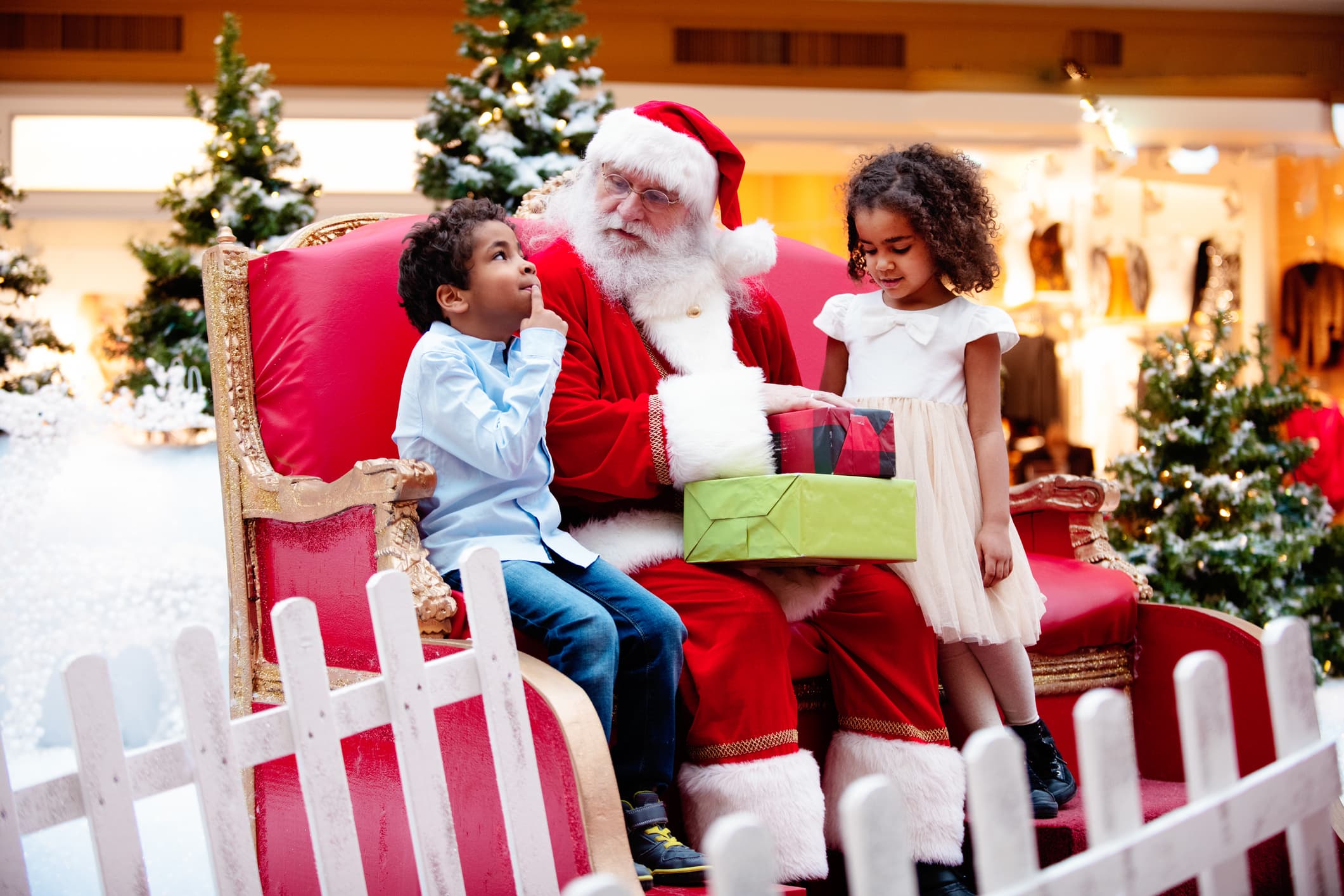
Jorge Casanova is a retired plumber who has been working as a professional Santa for about seven years. In the months leading up to Christmas, you can find Casanova greeting park-goers and taking photos with families at Santa’s Enchanted Forest, a holiday amusement park in Hialeah, Florida, he recently told LinkedIn.
Each July, Casanova grows out his beard, and in August, he bleaches his eyebrows, beard and hair silvery white to match Santa’s. He also starts being more relaxed about his diet because, as Casanova told LinkedIn, “nobody likes a skinny Santa.”
Being Santa, “is a reward within itself,” according to Casanova. But it’s also quite a lucrative gig, says a new LinkedIn report on professional Santas.
The economics of being Santa
Fifty-five percent of professional Santas on LinkedIn put on their red suits and spread Christmas cheer as their full-time job, according to the platform’s report.
Mitch Allen, founder and “head elf” at Hire Santa, a company which helps clients book Santas throughout the United States, tells CNBC Make It that outside of the holiday season, his Santas find work at year-round Christmas stores, appearing at “Christmas in July” themed events and visiting patients at hospitals, among other gigs.
Those who work part-time as Santa over the holidays are mostly small business owners, according to LinkedIn.
And while legends claim that Saint Nick is almost 2,000 years old, most Santas (39.14%) are Baby Boomers, which LinkedIn identifies as those born between 1946 and 1964. About 27% of Santas are Millennials, those born between 1981 and 1996, followed by Gen Xers (about 19%), born between 1965 and 1980, according to the report.
The start-up costs to become Santa are higher than you might expect.
Rick Rosenthal, a professional Santa in Atlanta, told CNBC Make It in 2018 that a high-quality Santa suit costs between $800 and $1,200.
Santas need to purchase other accessories including glasses, boots, a leather belt and buckle, Rosenthal said, which adds up to at least $250 to $400. There are other recurring expenses, too, like dry cleaning ($50-$150 per visit) and personal grooming, like beard bleaching – this can run about $100-$200 each season.
During the holiday season, which lasts from late November through December 25, a professional Santa can expect to make about $5,000 to $8,000, Rosenthal told CNBC Make It. Santas with more experience may make $15,000 or $20,000, according to Rosenthal, but “it’s hard to get past that.”
Salaries depend on where and how long Santa grants holiday wishes, too. The most “lucrative” Santa jobs come from working with malls and photography companies, according to the Bureau of Labor Statistics, where you can earn up to $20,000 in one holiday season.
More than a red suit
It takes specific skills to be a successful Santa. The top skills needed, according to LinkedIn, include customer service, social media and public speaking. Having management and event planning experience can also help you land a job as Santa, the report noted.
Really, “it’s not the suit, it’s what you do in the suit,” Casanova told LinkedIn. “We might be imposters, but I like to think we all have this need to spread Christmas cheer and we love children.”
Patience and a positive attitude are other core skills, according to Casanova. “The little kid in front of me at the time is the most important thing in the world, no matter how long the line is,” he said.
Playing Santa in a pandemic
Demand for appearances by Kris Kringle at holiday gatherings started surging before omicron hit.
Allen says that event planners have been eager to make up for lost time during the pandemic. Requests for his Santas more than doubled compared to previous years. “It’s been a crazy year,” he said. “We usually sell out after Thanksgiving, but we booked up all of our weekend slots even before then.”
Still, Covid looms large. Allen estimates his company has 10% less Santas available for hire this year, as many opted out of the season due to coronavirus fears. Then in recent weeks, Allen says he’s lost additional Santas who have come down with the virus — and the elves, as well as Santa’s other helpers, are more hesitant to work at in-person events, especially in virus hotspots like New York City.
Despite that, Allen says demand for Santas has not slowed down. “Dozens, if not hundreds of people, are continuing to reach out every day requesting visits,” he says. “People are already calling us to book their Santa for 2022.”
Check out:
‘The most guilt-ridden, nightmare time of year’: how to avoid holiday season burnout at work
Carrie Bradshaw’s career pivot in the SATC reboot points to a hard truth: The struggle is too real
The 5 best books to give young people this holiday season, according to a millennial therapist
Sign up now: Get smarter about your money and career with our weekly newsletter




